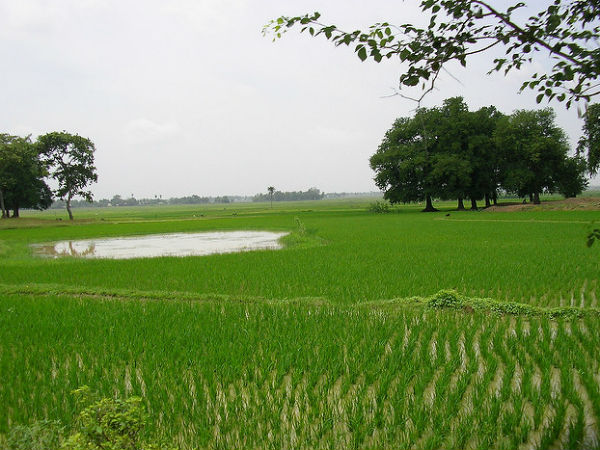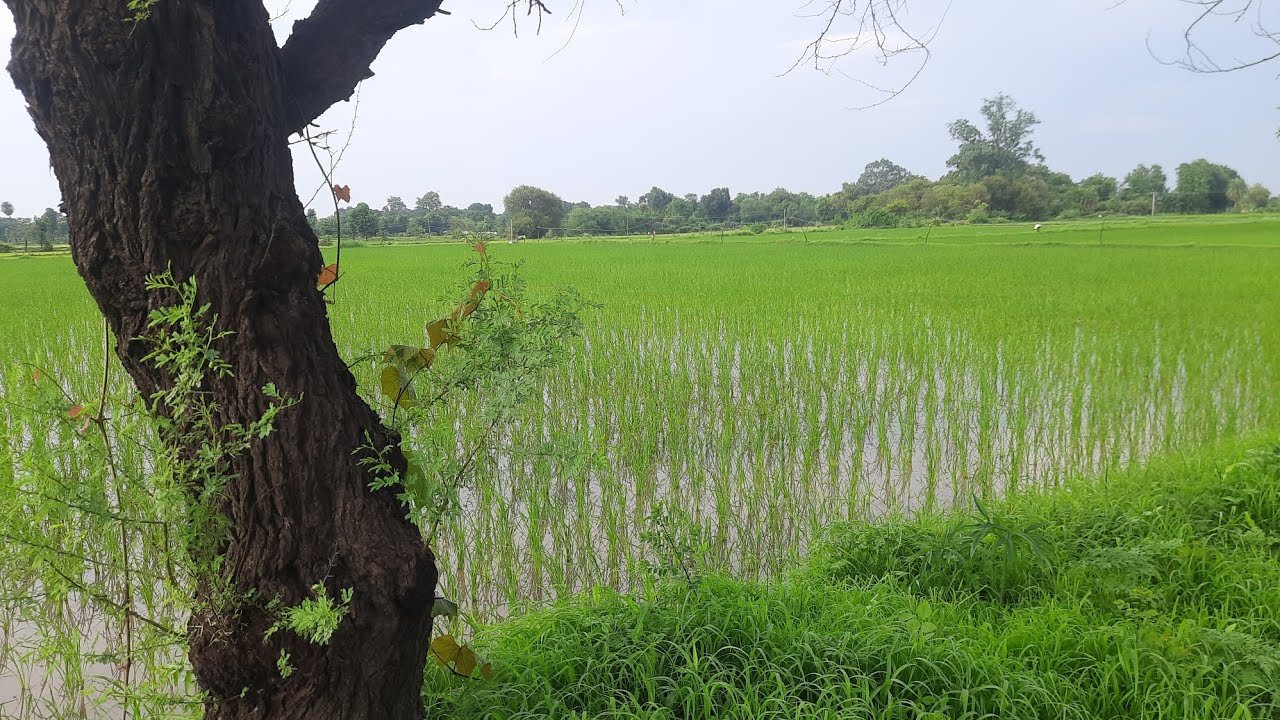Rice is the main staple food in Asia, where about 90% of the world's rice is produced and consumed ...
Basmati rice is known worldwide for its distinctive aroma and taste. The cultivation of Basmati rice has been practiced in India for centuries. India and Pakistan are considered the originators of Basmati rice. After the Green Revolution, India achieved self-sufficiency in food grains, and considering the global demand for Basmati rice and its immense export potential in the future, it has become essential to cultivate Basmati rice using scientific methods.
बासमती धान विश्व में अपनी एक विशिष्ट सुगंध एवं स्वाद के लिए जाना जाता है। बासमती धान की खेती भारत में पिछले सैकड़ों वर्षों से होते आ रही है। भारत तथा पकिस्तान को बासमती धान का जनक माना जाता है। हरित क्रांति के बाद भारत में खाद्यान्न की आत्मनिर्भरता प्राप्त करके बासमती धान की विश्व में मांग तथा भविष्य में इसके निर्यात की अत्यधिक संभावनाओं को देखते हुए बासमती धान की वैज्ञानिक पद्धति से खेती करने की अत्यंत आवश्यकता हो गई है। ।
भूमि की संरचना जलवायु एवं अन्य सम्बंधित कारक बासमती धान की सुगंध एवं स्वाद को अत्यधिक प्रभावित करते है। बासमती धान की खेती के लिए अधिक जल धारण करने वाले चिकनी या मटियारी मिट्टी उपयुक्त होती है।
बासमती धान की अच्छी पैदावार तथा उत्तम गुणवत्ता लेने के लिए अच्छी प्रजाति का चुनाव अत्यंत महत्वपूर्ण है। एक अच्छी प्रजाति में निम्न लिखित गुण होने चाहिए।

नर्सरी डालने से पहले बीज शोधन अवश्य कर लेवें जहाँ पर जीवाणु झुलसा या जीवाणु धारी रोग की समस्या हो वहां पर 25 किलोग्राम बीज के लिए 4 ग्राम स्ट्रेप्टोमाइसिन सल्फेट या 40 ग्राम प्लानटोमैसीन को पानी में मिलाकर रातभर पानी में भीगा के रखें , दूसरे दिन छाया सुखाकर नर्सरी डाले।
प्रजाति के अनुसार बासमती धान के लिए 25 – 30 किलोग्राम धान प्रति हेक्टेयर के लिए पर्याप्त होती है। 2 ग्राम प्रति किलोग्राम धान के हिसाब से कार्बेन्डाजिम द्वारा उपचारित करके बोना चाहिए।
बासमती धान की पौध तैयार करने के लिए उपजाऊ तथा अच्छे जल निकास और सिंचाई स्त्रोत के पास वाले खेत का चयन किया जाना चाहिए। 700 वर्गमीटर के नर्सरी के पौधे एक हेक्टेयर खेत में रोपाई के लिए पर्याप्त होती है। जल्दी पकने वाले बीज हेतु जून का दूसरा पखवाड़ा तथा देर से पकने वाली बीज के लिए जून का तीसरा पखवाड़ा अच्छा होता है। पौध शाला में सड़े हुए गोबर तथा कम्पोस्ट खाद को मिटटी में मिला देने चाहिए।

पौधे की रोपाई लगाने के लिए जमीन को पहले दो – तीन जुताई करने के बाद उसमे पानी भरकर पाटा चलाकर बरोबर करना चाहिए। साथ – खेत को छोटे – छोटे क्यारियों में भी बाँट देना चाहिए। रोपाई से पहले 10 वर्गमीटर क्षेत्रफल में 225 ग्राम अमोनियम सल्फेट या 100 ग्राम यूरिया और सुपर फास्फेट को अच्छी तरह से मिला देना चाहिए। आवश्यकता अनुसार निदाई , गुंडाई , खरपतवार नियंत्रण आदि कर लेना चाहिए।
बासमती धान में खाद एवं उर्वरक की आवश्यकात सामान्य धान की तुलना में आधी लगती है। परन्तु नई उन्नत प्रजातियों में ऊंचाई कम होने के कारण नत्रजन की मांग परंपरागत प्रजातियों की तुलना में अधिक हो गई है। बासमती धान की नए प्रजातियों में 90 – 100 किलोग्राम नत्रजन , 40 किलो फास्फोरस , 30 किलोग्राम पोटास प्रति हेक्टेयर देना चाहिए।
धान की फसल को सबसे ज्यादा सिंचाई की आवश्यकता होती है , इसलिए धान की फसल को उचित पानी की उपलब्धता वाले जगह पर ही उगाने चाहिए। पानी का उचित प्रबंधन नहीं होने से उपज में भारी गिरावट आ जाती है। दाना बनने की अवस्था तक खेत में पानी बनाए रखना चाहिए। पर्याप्त वर्षा नहीं होने पर लगातार सिंचाई करते हुए नमी बनाये रखना चाहिए। फसल के कटाई के 15 दिन पहले खेत से पानी निकाल देना चाहिए।
खरपतवार नियंत्रण हेतु धान की रोपाई लगाने से पहले और रोपाई के बाद उगने वाले खरपतवार की निदाई – गुड़ाई करनी चाहिए। साथ ही आवश्यकतानुसार खरपतवारनाशी का उपयोग करना चाहिए।
धान के फसल में अन्य फसलों के तुलना में अधिक कीट एवं रोग लगते है खासकर बासमती धान में ज्यादा रोग और कीट लगने की संभावना बनी रहती है। रोग एवं कीट उत्पादन को काफी प्रभावित करते है।
बासमती एवं सुगन्धित धान की खेती करने के लिए आवश्यक बातों को हमने विस्तार से बताया है उम्मीद है यह जानकारी आपलोगो को अच्छी लगेगी। बासमती धान सहित अन्य प्रजातियों के धान की खेती करने में बहुत सावधानियों ककी आवश्यकता होती है। बीज की मात्रा , मिट्टी की तैयारी , नर्सरी , रोपाई , सिंचाई प्रबंधन , खाद एवं उर्वरक की मात्रा आदि पर विशेष ध्यान देने पर अच्छी उत्पादन लिया जा सकता है।
कृषि से संबंधित वीडियो देखने के लिए यहाँ क्लिक करें: YouTube
Here is the translated content in English while keeping the HTML tags intact: ```html
The structure of the land, climate, and other related factors greatly affect the aroma and taste of Basmati rice. For cultivating Basmati and aromatic rice, clayey or loamy soil with high water retention capacity is suitable.
Selecting a good variety is extremely important for high yield and superior quality of Basmati rice. A good variety should have the following characteristics:
Before sowing in the nursery, seed treatment must be done. In areas where bacterial blight or bacterial stripe disease is a problem, mix 4 grams of streptomycin sulfate or 40 grams of plantomycin in water for 25 kg of seeds and soak them overnight. The next day, dry them in shade before sowing in the nursery.
Depending on the variety, 25-30 kg of Basmati rice seeds per hectare is sufficient. The seeds should be treated with carbendazim at a rate of 2 grams per kg of rice before sowing.
For preparing Basmati rice seedlings, a fertile land with proper drainage and an irrigation source should be selected. A nursery of 700 square meters is sufficient for transplanting in one hectare of field. The second fortnight of June is ideal for early maturing varieties, while the third fortnight of June is best for late-maturing varieties. Rotten manure and compost should be mixed with the soil in the nursery.
Before transplanting the seedlings, the land should be plowed two to three times, then leveled by filling it with water and using a roller. The field should be divided into small beds. Before transplanting, mix 225 grams of ammonium sulfate or 100 grams of urea and superphosphate per 10 square meters of area. Perform weeding, hoeing, and weed control as required.
Basmati rice requires half the amount of fertilizers compared to regular rice. However, due to the shorter height of the new improved varieties, the nitrogen demand has increased compared to traditional varieties. The new varieties of Basmati rice require 90-100 kg of nitrogen, 40 kg of phosphorus, and 30 kg of potassium per hectare.
Rice crops require the highest amount of irrigation, so they should be grown in areas with adequate water availability. Improper water management can cause a significant decrease in yield. Water should be maintained in the field until the grain formation stage. If there is insufficient rainfall, continuous irrigation should be provided to maintain moisture. Water should be drained from the field 15 days before harvesting.
For weed control, weeding and hoeing should be done before and after transplanting rice seedlings. Herbicides should be used as required.
Rice crops are more prone to pests and diseases compared to other crops, especially Basmati rice. Pests and diseases significantly impact production.
We have discussed in detail the essential aspects of cultivating Basmati and aromatic rice. We hope this information is helpful to you. Cultivating Basmati rice and other varieties requires great caution. Paying special attention to seed quantity, soil preparation, nursery management, transplanting, irrigation, fertilizer application, and weed control can help achieve a good yield.
```0
0